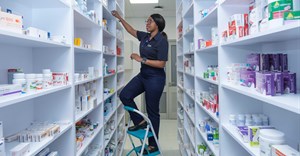Netcare employs bots in war against superbugs

“Our new ‘allies’ in infection prevention and control have shown such impressive results internationally and during pilot trials at two of our hospitals, that Netcare recently ordered a second consignment of these highly advanced robots, manufactured by Xenex, to further bolster our comprehensive existing disinfection measures,” says Jacques du Plessis, managing director of Netcare’s hospital division.
Senior clinical advisor at Netcare, Dr Caroline Maslo, explains that the Xenex Pulsed Xenon UV Disinfection Robots were recently made available in Africa for the first time, but are becoming an established line of defence against bacteria, viruses and fungi in healthcare facilities across Europe and the United States.
Fights superbugs
“We initially tested the robot at Netcare Blaauwberg Hospital and Netcare Pretoria East Hospital, where we found that they quickly and efficiently disinfected the areas where they were deployed. Having tested the robots in different settings in the two facilities in separate provinces, we found that the results lived up to the independent international studies endorsing this method of disinfection,” Maslo says.
“What we found particularly impressive is the fact that the pulsed high-intensity xenon ultraviolet [UV] light used is not only highly effective in destroying viruses, bacteria and fungal spores, but is also able to achieve thorough disinfection far more quickly than the other traditional methods, which we continued to use alongside the robots. In addition, the robots can be used 24 hours a day.
“This means that we are able to continually move the robots around within our facilities to apply this rigorous disinfection within minutes, with minimal disruption to busy hospital areas. We have also enlisted the robots for disinfecting Netcare 911 ambulances to excellent effect.”
The robots emit UV-C spectrum light, which destroys the DNA of bacteria, viruses and fungi to neutralise them and prevent them from replicating. The technology is entirely non-toxic, although the area must be vacated during the robot’s disinfection cycle, as our eyes are sensitive to the UV light.
“This form of disinfection is particularly useful against antibiotic resistant bacteria, commonly referred to as ‘superbugs’, and has the added benefit that it is non-toxic. It is environmentally friendly in that it requires no water during operation, thus rendering it optimally water-wise when compared with other forms of intensive disinfection. It furthermore uses minimal electricity,” Maslo says.
No harmful side byproducts
Another important benefit is that the robots’ UV light does not result in any residue or potentially harmful byproducts, which means it is totally safe for use in even the most sensitive environments, such as neonatal intensive care units where premature and other compromised babies are cared for.
“The robots are proving effective and efficient, while being tough on germs yet gentle on the environment. This new technology does not replace the infection risk management protocols and procedures we already have in place, but are certainly complementing them as an additional weapon in our arsenal against potentially harmful germs,” she says.
“Another benefit brought about by the arrival of the robots is that the cleaning staff responsible for operating this technology are acquiring new sets of skills. This is not a case of robots replacing human labour, but rather of robots empowering their human operators.”
“Introducing this new disinfection technology in Netcare hospitals is a significant step forward and is keeping our facilities abreast of the latest advances in the global fight against microbe resistance in healthcare facilities. We are very encouraged to see the results the robots have shown in Netcare hospitals,” concludes Du Plessis.














